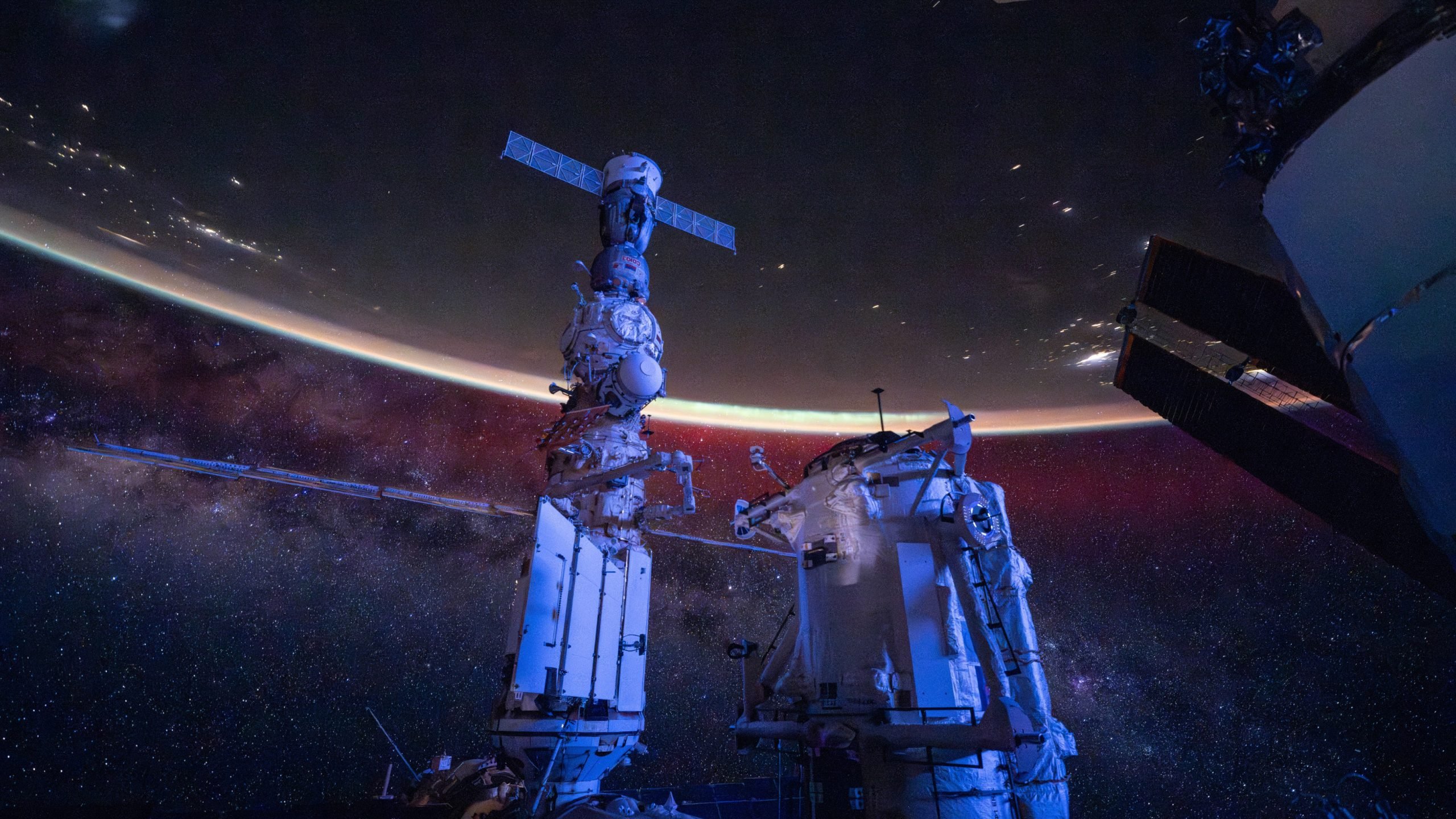

Astronauts are often amazing photographers, and Matthew Dominick recently confirmed it once again. He shared a stunning image of the aurora borealis captured from the International Space Station. The photo features the Russian Soyuz spacecraft in the foreground against a backdrop of vibrant red and green auroras caused by increased solar activity.
“The aurora have been amazing the past few days,” Matthew wrote on X. “Great timing for trying out a new lens that recently arrived on Cygnus.” He took advantage of new camera lenses recently delivered to the ISS, including a T/1.8 Arri Zeiss 15mm for his Nikon Z9. The result is a breathtaking image that has garnered significant attention online.
Credits: NASA/Matthew Dominick
Dominik took the photo at the 0.8s exposure and whopping ISO 25600. “Embracing noise – but then denoised in photoshop,” he wrote on X. He also shared a rotated image that looks more natural, but the one he shared first, that seems upside down to us – that’s how the astronauts saw the spectacle from the ISS.
Credits: NASA/Matthew Dominick
In addition to the photo, Dominick also shared a timelapse showcasing the moon setting into the aurora and the subsequent sunrise illuminating the Soyuz spacecraft. I personally like it even more as it shows the dance of the colorful lights.
Timelapse of the moon setting into streams of red and green aurora followed by a sunrise lighting up Soyuz with a light blue. The aurora have been amazing the past few days. Great timing for trying out a new lens that recently arrived on Cygnus. 15mm, T1.8, 1/3s exposure,… pic.twitter.com/otFv5pZ6vd— Matthew Dominick (@dominickmatthew) August 12, 2024
Our Sun is a dynamic star that undergoes cycles of increased and decreased activity. During periods of high activity, it releases massive bursts of charged particles, known as solar flares and coronal mass ejections. These particles are propelled into space at incredible speeds. When this energetic stream of particles encounters Earth’s magnetic field, they are guided towards the poles. As these particles collide with the Earth’s atmosphere, they excite the gases present, causing them to emit light we know as auroras. The specific colors of the aurora depend on the type of gas involved and the altitude at which the collision occurs.
As you may remember (or perhaps have witnessed), solar activity has increased on several occasions over the past year or so. It sent auroras to places they aren’t normally seen from, including New York, England; even some folks here in Serbia witnessed it!
Still, it never ceases to be magical to see it captured from the ISS. I can only imagine what it is like for astronauts to witness this marvel in person.
[via PetaPixel]






